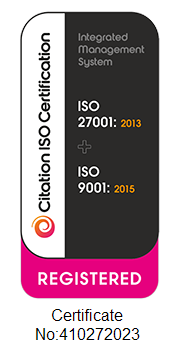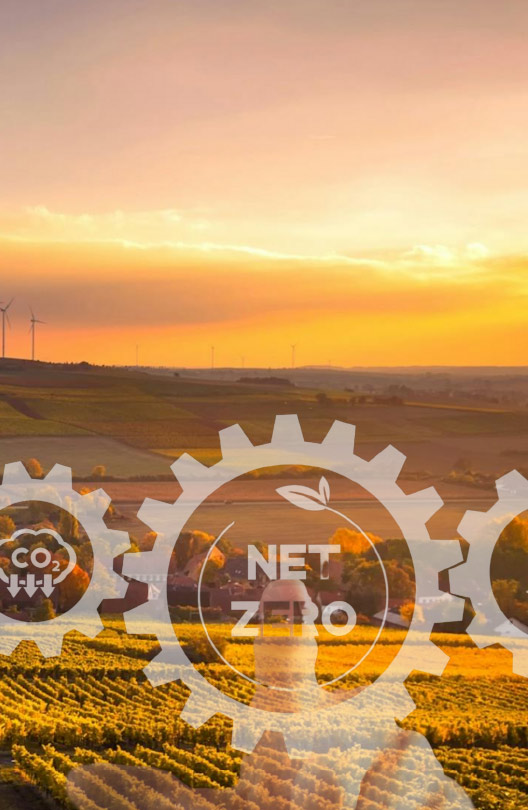THIS ARTICLE AT A GLANCE
CONTACT ETS
If you have any questions or would like to discuss further what you should be doing, ETS is here and willing to help.
Call 0117 205 0542
Email enquiries@energy-ts.com
Submit a contact form
CHECK OUR SERVICES
Is renewable energy and technology a good investment?

Significant and well documented concerns around global warming and environmental degradation caused by human activity have provoked a movement towards responsible business practices. Organisations are being increasingly scrutinised to demonstrate they are proactivity engaged with ethical and sustainable activities.
In the past year, public criticism surrounding irresponsible business operations have only been amplified. The highly publicised effects of climate change, large-scale demonstrations by organisations such as Extinction Rebellion, and accelerated efforts by government bodies to reduce carbon emissions have put increasing pressure on businesses. Despite this, many commercial enterprises are struggling to transition into the low carbon economy. The challenge for many businesses is finding energy saving opportunities which deliver a good ROI with a managed risk profile.
There are a lot of technologies available in the market which are still in their early stages of development. Many of the options available are either very costly or have significant barriers to deployment. Phil Bilyard, Operations Director for ETS discusses this in more detail.
Types of Renewable and Low Carbon Technology
There is a whole host of renewable or ‘low carbon’ technologies on the market in what is quite an established sector, to mention but a few:
- Anaerobic digestion
- Biomass / Biofuel
- Combined Heating and Power
- Ground source heat pumps
- Passive ground cooling
- Photo Voltaic – Solar energy
- Solar Thermal
- Tidal
- Wind
The list goes on…
Why do we consider renewable or low carbon technologies?
Principally, from a moral stance, everyone (particularly business leaders) should be considering the impact in terms of scale and extent of their operations on the natural environment.
Outside of the moral obligation, an organisation has many motivations to install LZC technologies and these would typically include the following reasons:
- Energy saving opportunities
- Potential new revenue streams from subsidies
- Public profile and credentials
- Competition and staying ahead of the game
Benefits, Subsidy and Tariff’s
The UK government, and ultimately the tax payer, subsidised the renewable sector to enable the growth of the industry and this has been largely successful. The long-term aim was to kick the industry into life and then to systematically reduce subsidies as sectors became established, manufacturing costs reduced, and systems being offered to the market place at a more competitive price point.
The government has introduced many schemes in example; the long-standing Enhanced Capital Allowance Scheme, Micro Generation Scheme, Renewable Heat Incentive and many more. The government has also placed obligations on generators and suppliers on the level of ‘contribution’ of renewable technologies that generate energy on to the grid.
The Reality
Those organisations that had renewable technologies installed circa 2010, have benefited from high guaranteed subsidy level and reduced pay back.
Scheme administration, guidance and subsidies for many electricity consumers and end users has often been complex, leading to confusion and misunderstanding. It has allowed many an entrepreneur to achieve extensive profit margins for their business often at the expense of the consumer and end user.
The quality of some earlier installations, as can be imagined, has not been to the highest standard in some instances. That said, an industry has emerged that is stable, more consistently regulated with stricter standards.
Integration and the way forward
When an organisation considers low carbon and renewable technologies, they should review the business case in an integrated approach. It is important that if a supplier of a renewable technology or system presents a case to a client, the organisation considers it holistically.
For example, Photo Voltaic (solar generation) might appear to be a reasonable option. However, when incorporating this technology with others, such as battery storage and coupling it with National Grid revenue initiatives, the proposition becomes even more attractive.
We have undertaken such a study with PV generation, battery storage and income streams that could be achieved from the National Grid for Demand Side Response (DSR) services. PV in isolation, in the cases reviewed, provided and extend payback of circa 9 years. When factored in with battery storage and DSR services, it dropped to circa 6-7 years.
The industry talks about payback and return on investment. These facets are only two considerations of a business case. It is important to consider life-cycle analysis and never consider simple payback in isolation.
The Do’s and Don’ts
Do
- Consider technologies holistically
- Consider energy management practice and energy optimisation in this holistic approach
- Determine scale, scope and extent of the operation and viability
- Seek advice from an independent source if in doubt
- Always undertake life-cycle analysis of any proposed scheme
Don’t
- Consider a technology in isolation
- Take a proposal at face value, which illustrates in simple pay back only. Challenge costs and request life-cycle analysis
- Forget the basics of energy management practice, energy optimisation and ‘sweating’ existing assets
Final thoughts
If you are looking for an energy management system that is tailored to your business needs, ETS can provide you with 25 years of experience in dramatically improving energy efficiency and reducing environmental impacts. Whether your businesses have individual assets or large international portfolios, ETS can assist you in saving substantial amounts of money while significantly reducing your carbon performance.
To discuss your requirements, get in touch. You can contact us by calling 0117 205 0542 or drop us an email at enquiries@energy-ts.com.
Significant and well documented concerns around global warming and environmental degradation caused by human activity have provoked a movement towards responsible business practices. Organisations are being increasingly scrutinised to demonstrate they are proactivity engaged with ethical and sustainable activities.
In the past year, public criticism surrounding irresponsible business operations have only been amplified. The highly publicised effects of climate change, large-scale demonstrations by organisations such as Extinction Rebellion, and accelerated efforts by government bodies to reduce carbon emissions have put increasing pressure on businesses. Despite this, many commercial enterprises are struggling to transition into the low carbon economy. The challenge for many businesses is finding energy saving opportunities which deliver a good ROI with a managed risk profile.
There are a lot of technologies available in the market which are still in their early stages of development. Many of the options available are either very costly or have significant barriers to deployment. Phil Bilyard, Operations Director for ETS discusses this in more detail.
Types of Renewable and Low Carbon Technology
There is a whole host of renewable or ‘low carbon’ technologies on the market in what is quite an established sector, to mention but a few:
- Anaerobic digestion
- Biomass / Biofuel
- Combined Heating and Power
- Ground source heat pumps
- Passive ground cooling
- Photo Voltaic – Solar energy
- Solar Thermal
- Tidal
- Wind
The list goes on…
Why do we consider renewable or low carbon technologies?
Principally, from a moral stance, everyone (particularly business leaders) should be considering the impact in terms of scale and extent of their operations on the natural environment.
Outside of the moral obligation, an organisation has many motivations to install LZC technologies and these would typically include the following reasons:
- Energy saving opportunities
- Potential new revenue streams from subsidies
- Public profile and credentials
- Competition and staying ahead of the game
Benefits, Subsidy and Tariff’s
The UK government, and ultimately the tax payer, subsidised the renewable sector to enable the growth of the industry and this has been largely successful. The long-term aim was to kick the industry into life and then to systematically reduce subsidies as sectors became established, manufacturing costs reduced, and systems being offered to the market place at a more competitive price point.
The government has introduced many schemes in example; the long-standing Enhanced Capital Allowance Scheme, Micro Generation Scheme, Renewable Heat Incentive and many more. The government has also placed obligations on generators and suppliers on the level of ‘contribution’ of renewable technologies that generate energy on to the grid.
The Reality
Those organisations that had renewable technologies installed circa 2010, have benefited from high guaranteed subsidy level and reduced pay back.
Scheme administration, guidance and subsidies for many electricity consumers and end users has often been complex, leading to confusion and misunderstanding. It has allowed many an entrepreneur to achieve extensive profit margins for their business often at the expense of the consumer and end user.
The quality of some earlier installations, as can be imagined, has not been to the highest standard in some instances. That said, an industry has emerged that is stable, more consistently regulated with stricter standards.
Integration and the way forward
When an organisation considers low carbon and renewable technologies, they should review the business case in an integrated approach. It is important that if a supplier of a renewable technology or system presents a case to a client, the organisation considers it holistically.
For example, Photo Voltaic (solar generation) might appear to be a reasonable option. However, when incorporating this technology with others, such as battery storage and coupling it with National Grid revenue initiatives, the proposition becomes even more attractive.
We have undertaken such a study with PV generation, battery storage and income streams that could be achieved from the National Grid for Demand Side Response (DSR) services. PV in isolation, in the cases reviewed, provided and extend payback of circa 9 years. When factored in with battery storage and DSR services, it dropped to circa 6-7 years.
The industry talks about payback and return on investment. These facets are only two considerations of a business case. It is important to consider life-cycle analysis and never consider simple payback in isolation.
The Do’s and Don’ts
Do
- Consider technologies holistically
- Consider energy management practice and energy optimisation in this holistic approach
- Determine scale, scope and extent of the operation and viability
- Seek advice from an independent source if in doubt
- Always undertake life-cycle analysis of any proposed scheme
Don’t
- Consider a technology in isolation
- Take a proposal at face value, which illustrates in simple pay back only. Challenge costs and request life-cycle analysis
- Forget the basics of energy management practice, energy optimisation and ‘sweating’ existing assets
Related Article
8 Ways Businesses Can Reduce Energy Use in the Workplace This Winter
Discover how to comply with ESOS Phase 4 and unlock energy-saving opportunities for your business. This guide explains the requirements, highlights key deadlines, and provides actionable strategies. Learn how energy audits, tailored action plans, and expert support can reduce costs, improve efficiency, and align your organisation with sustainability goals.
ESOS Action Planning: Complying with Phase 4 and Implementing Energy Saving Strategies
Discover how to comply with ESOS Phase 4 and unlock energy-saving opportunities for your business. This guide explains the requirements, highlights key deadlines, and provides actionable strategies. Learn how energy audits, tailored action plans, and expert support can reduce costs, improve efficiency, and align your organisation with sustainability goals.
Important Update: What You Need to Know about ESOS Phase 3
Time is ticking for the ESOS Phase 3 deadline. The Environment Agency announced that the reporting system is available now. For organisations qualifying for ESOS Phase 3, the deadline for submitting a compliance notification is 5 June 2024, and organisations should still look to meet this compliance notification deadline where possible.










































































